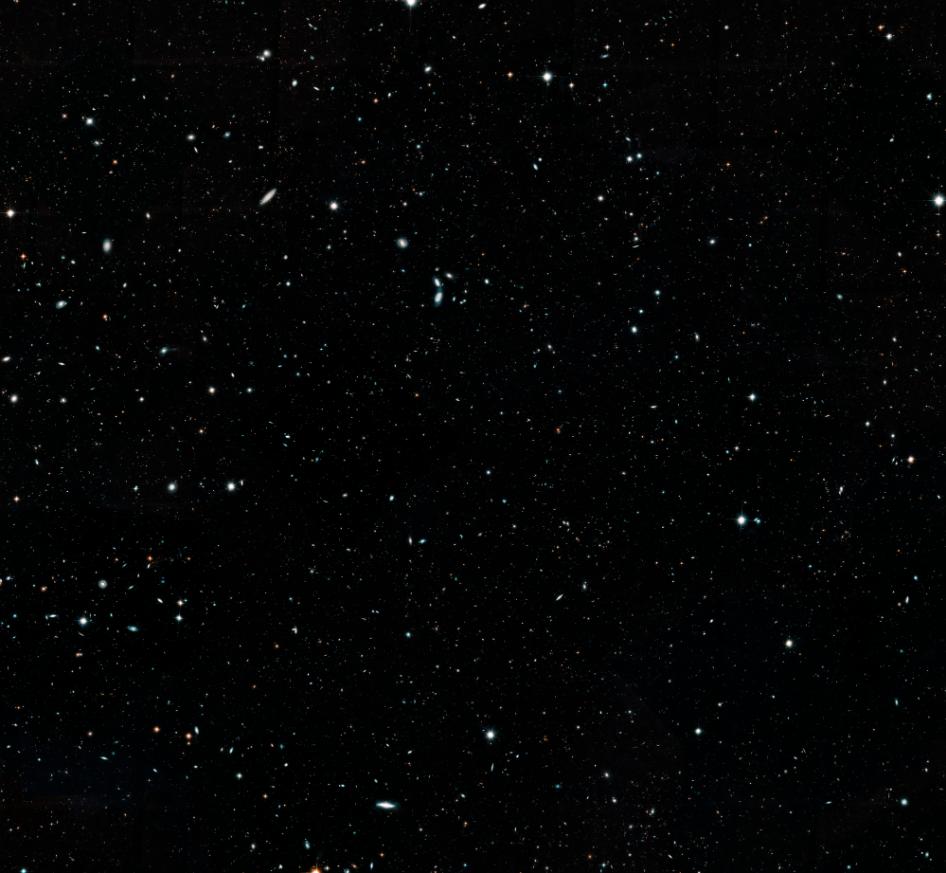Portrait of universe containing 265K galaxies stretching back through 13.3 bn years

Scientists have put together a deep-sky mosaic, providing a portrait of the distant universe containing 265,000 galaxies that stretch back through 13.3 billion years of time, using data from NASA's Hubble Space Telescope. The image is the largest and most comprehensive "history book" of galaxies dating back to just 500 million years after the Big Bang, researchers said.
Created from nearly 7,500 individual exposures, the image stitches together 16 years' worth of observations from the Hubble Space Telescope. The portrait shows how galaxies change over time, building themselves up to become the giant galaxies seen in the nearby universe.
The ambitious endeavour, called the Hubble Legacy Field, also combines observations taken by several Hubble deep-field surveys, including the eXtreme Deep Field (XDF), the deepest view of the universe. The wavelength range stretches from ultraviolet to near-infrared light, capturing the key features of galaxy assembly over time.
"Now that we have gone wider than in previous surveys, we are harvesting many more distant galaxies in the largest such dataset ever produced by Hubble," said Garth Illingworth of the University of California, Santa Cruz in the US, leader of the team that assembled the image. "This one image contains the full history of the growth of galaxies in the universe, from their time as 'infants' to when they grew into fully fledged 'adults'," Illingworth said in a statement.
No image will surpass this one until future space telescopes are launched, researchers said. "We've put together this mosaic as a tool to be used by us and by other astronomers," Illingworth added.
"The expectation is that this survey will lead to an even more coherent, in-depth and greater understanding of the universe's evolution in the coming years," he said. The image yields a huge catalogue of distant galaxies.
"Such exquisite high-resolution measurements of the numerous galaxies in this catalogue enable a wide swath of extragalactic study," said Katherine Whitaker of the University of Connecticut in the US. "Often, these kinds of surveys have yielded unanticipated discoveries which have had the greatest impact on our understanding of galaxy evolution," Whitaker said.
The new portrait, a mosaic of multiple snapshots, covers almost the width of the full Moon. The XDF, which penetrated deeper into space than this wider view, lies in this region, but it covers less than one-tenth of the full Moon's diameter. The Legacy Field also uncovers a zoo of unusual objects. Many of them are the remnants of galactic "train wrecks," a time in the early universe when small, young galaxies collided and merged with other galaxies.
The image comprises the collective work of 31 Hubble programmes by different teams of astronomers. Hubble has spent more time on this tiny area than on any other region of the sky, totalling more than 250 days, representing nearly three-quarters of a year. "Our goal was to assemble all 16 years of exposures into a legacy image," said Dan Magee, of the University of California, Santa Cruz, the team's data processing lead.
"Previously, most of these exposures had not been put together in a consistent way that can be used by any researcher," said Magee. "Astronomers can select the data in the Legacy Field they want and work with it immediately, as opposed to having to perform a huge amount of data reduction before conducting scientific analysis," he said.
This new image mosaic is the first in a series of Hubble Legacy Field images. The team is working on the second set of images, totalling more than 5,200 Hubble exposures, in another area of the sky.
(With inputs from agencies.)
ALSO READ
This stunning nebula will be lost to future astronomers forever
Astronomers unravel the mystery of the 'Dragon's Egg' nebula
Science News Roundup: China launch of relay satellite Queqiao-2 for lunar probe mission successful; Astronomers unravel the mystery of the 'Dragon's Egg' nebula and more
Science News Roundup: Astronomers unravel the mystery of the 'Dragon's Egg' nebula; US, Japan announce partnership to accelerate nuclear fusion and more
Science News Roundup: US, Japan announce partnership to accelerate nuclear fusion; Astronomers unravel the mystery of the 'Dragon's Egg' nebula and more










